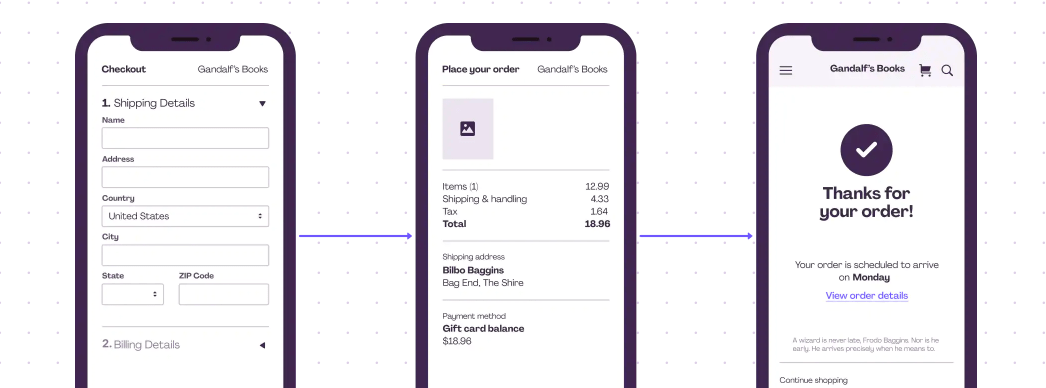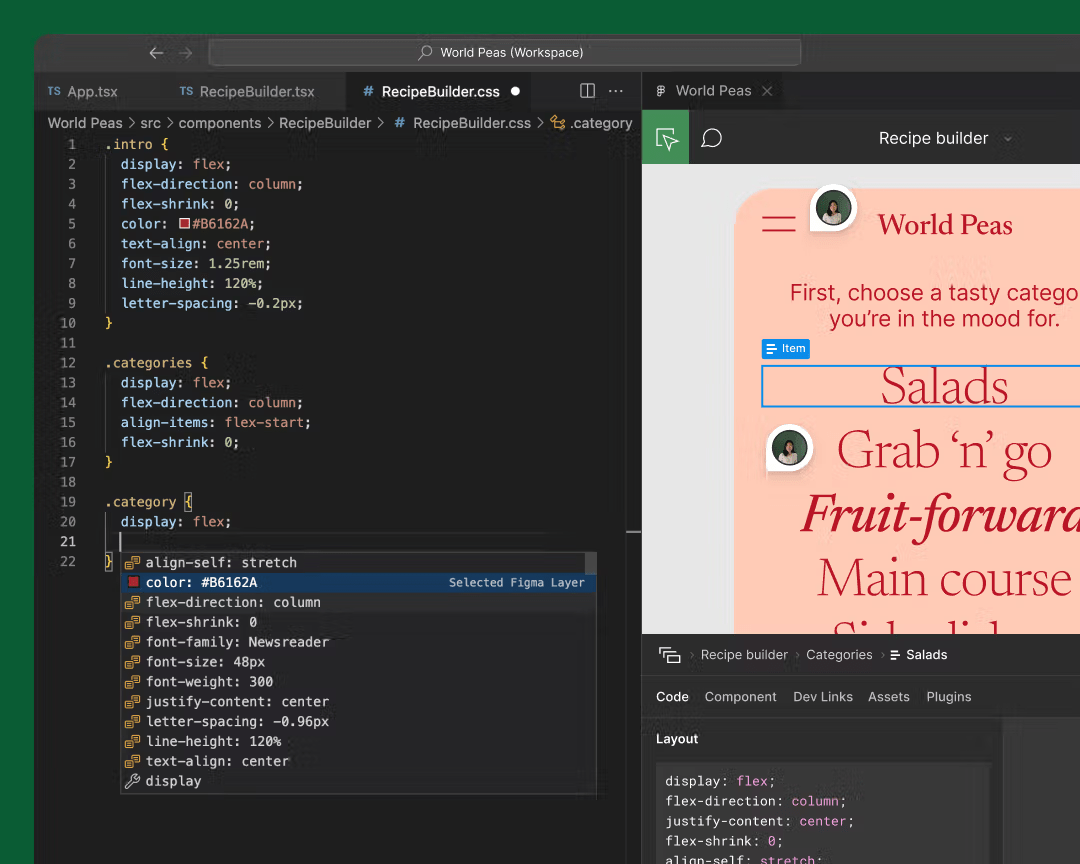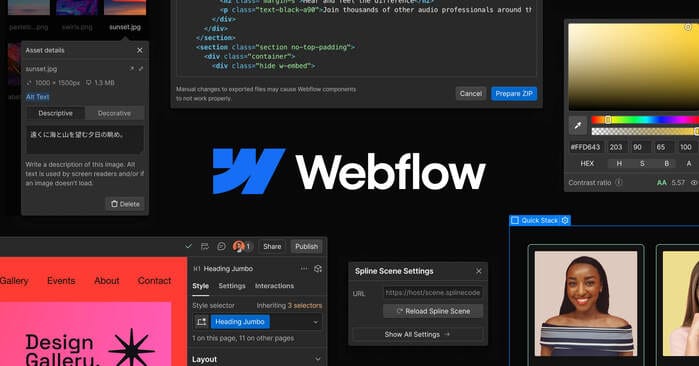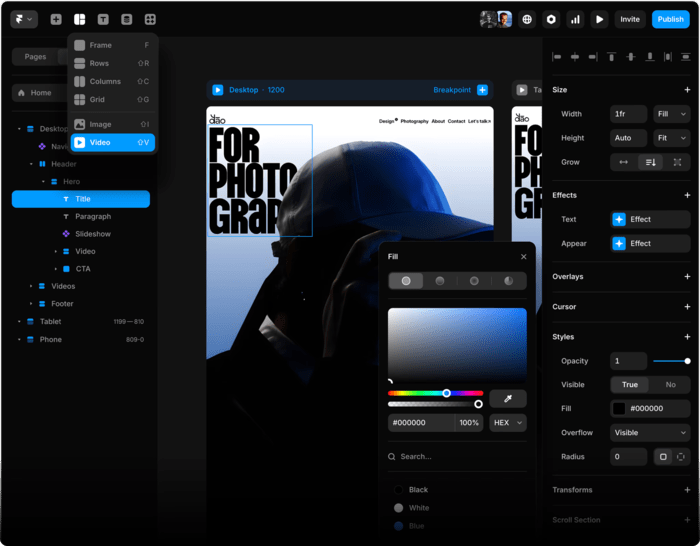From Wireframes to Full Launch: Automating Web Development
Learn how automating the web development lifecycle, from wireframing to frontend and backend, boosts delivery speed and collaboration using no-code, low-code platforms, and DevOps practices like CI/CD.

Automating the entire lifecycle has become a game-changing strategy for faster delivery in software development. By using the right tools and processes, teams can streamline each phase. From wireframing to the final product launch, with the help of no-code and low-code platforms. The real advantage? Faster time-to-market which can give companies a critical edge in staying competitive and responding quickly to user needs. Organizations that adopt modern development automation can release features and products in a fraction of the time it used to take.
Speed isn’t the only factor. Efficiency and collaboration also improve with the right automation. By automating repetitive tasks and using visual tools, developers and even non-developers (think designers or product managers) can work together more fluidly. Businesses are adopting automation to stay competitive: 84% of enterprises have turned to low-code/no-code to reduce strain on IT, increase delivery speed, and involve the business in development. And it’s not just about no-code platforms. The modern DevOps practices (adopting CI/CD, etc.) are nearly ubiquitous because they lead to faster release cycles.
Let’s walk through the key phases of a typical web app project – and see how automation (especially via no-code/low-code tools) can speed up each one. At every step, there are tools to reduce manual work and streamline the workflow. Here’s how you can go from an initial concept to a fully launched app with much less hand-coding:
Wireframing and Planning Automation
Every great app starts with an idea and a plan. Traditionally, you might sketch screens on a whiteboard or craft wireframes in static documents. Today, we have smarter ways to ideate and plan. No-code planning tools like Whimsical and design platforms like Figma (with plugins) can automate big chunks of this early stage.
Whimsical is an online tool for quick wireframing, user flows, and even project specs. It’s drag-and-drop simple, so you can whip up a mock interface or flowchart in minutes. Teams love these tools because they’re collaborative – multiple people can build on the wireframe at once, which means faster feedback and iteration. Some even add a touch of AI: Whimsical, for instance, can create connected task lists right from your wireframe boards. This kind of automation keeps everyone on the same page without extra effort.

Figma, a popular UI design tool, has also supercharged the planning phase. Designers and developers can work together in Figma to not only draw out the app screens (wireframes and high-fidelity designs) but also prepare assets for development. With the addition of Figma Plugins and the newer Figma Dev Mode, you can automate the hand-off from design to development. Instead of manually documenting CSS values or spacing, Figma can automatically generate code snippets for you.

Even more impressively, AI is now being used for AI wireframing, where intelligent tools can automatically generate wireframes based on user input or project requirements. These AI-driven tools can suggest layouts, design elements, and user flows, significantly speeding up the design process. This allows teams to move quickly from concept to a more structured design, reducing manual work and ensuring the wireframe is not only functional but aligned with best design practices.
Frontend Development Automation
Once the designs are ready, the next phase is building the user interface. Frontend development traditionally involves writing HTML, CSS, and JavaScript (or using frameworks) to bring those designs to life. But writing all that code by hand can be slow. There are frontend automation tools – especially no-code/low-code platforms that let you build UIs visually or generate code from higher-level specs. A few popular examples are Webflow, Framer, and the Figma-to-code plugin we mentioned (Anima). These tools let you create rich, responsive frontends without (much) manual coding.
Webflow, for instance, is a platform that provides a drag-and-drop visual editor to build websites. As you design visually – placing text, images, forms, etc. – Webflow is generating clean HTML/CSS/JavaScript in the background. You can achieve complex layouts and animations using a GUI, and Webflow will handle the code and even hosting. This is huge for speed: a web designer can publish a production-ready marketing site or simple web app interface in Webflow without waiting on a developer at all. It’s all code-free, though Webflow also allows adding custom code if needed (hence sometimes called a low-code tool).

Similarly, Framer is another visual development tool originally known for prototyping; it now allows you to design web pages or simple apps visually and deploy them. These kinds of tools are perfect for building frontends quickly – you might use them to create a landing page, an interactive form, or even the entire client-side of a web app. The time savings are significant: what might take days of coding can often be done in a few hours of drag-and-drop. Plus, changes are easy – want to tweak the layout or text? Just do it visually and publish, no need to dive into code files.

For developers who still want code but less grunt work, there are semi-automated solutions. We already touched on Figma plugins that generate code. To give a concrete example, Anima can export React components complete with styled CSS from your Figma design, detecting patterns to avoid duplicate code and speed up implementation. Another example is Locofy (not mentioned above, but in the same spirit), which can turn designs into working React/Vue code or even Flutter code. Using these, a frontend engineer’s job shifts from writing boilerplate UI code to refining and integrating the generated code. It’s a form of automation where the heavy lifting of converting design to structure is done for you.
In practice, many teams use a mix: they might use Webflow or Framer for some parts of a project (say, the marketing site or a quick proof-of-concept UI), and export code or use plugins for other parts that will be integrated into a larger codebase. The result is a much faster frontend development cycle. You can go from a wireframe to a live, interactive UI in hours or days instead of weeks. And because these tools often enforce good practices (like responsive design out of the box), you save time on cross-browser fixes and polish, too.
Backend Automation Tools
What about the server side of your application – the backend? Setting up a backend traditionally means provisioning servers, writing database schemas, creating REST APIs or GraphQL endpoints, implementing authentication, and so on. That can be a ton of work. Fortunately, there’s a category of tools to automate backend development as well. No-code/low-code backend platforms and Backend-as-a-Service (BaaS) products can handle most of those responsibilities for you, letting you configure a backend with minimal coding. Leading examples include Xano, Supabase, and Firebase, among others.
Xano is often dubbed “the scalable no-code backend.” It provides a visual interface to design your database (tables, fields, relationships), create API endpoints, and write backend logic using a no-code editor (like building flows instead of writing code). Essentially, Xano lets you build the entire server side of an application without writing traditional code, and it hosts it for you. The key benefit is speed: someone with no backend coding experience can set up user accounts, business logic, and data storage via Xano’s UI. In other words, it automates all those boilerplate backend tasks that normally would require a dedicated backend developer.
Firebase, by Google, has been popular for years as a BaaS: you get a cloud database (Firestore or realtime DB), user authentication, file storage, cloud functions (serverless functions), and more, all out-of-the-box. Instead of writing a user login system from scratch, you drop in Firebase Auth and get email/password, Google login, etc., with a few config steps. Need a database? You use Firestore and interact with it from the client via SDKs rather than writing API endpoints. This can dramatically reduce development time, especially for mobile and web apps that fit well with its model.
Supabase is a newer open-source alternative to Firebase – it gives you a Postgres database with RESTful and realtime API automatically generated, plus auth and storage, all managed for you. Supabase is slightly more developer-oriented (SQL database you can query), but it’s still largely configuration over code. For example, creating a new table or column in Supabase is as easy as in a spreadsheet UI, and it immediately becomes available via APIs. Both Firebase and Supabase let you focus on your app’s front-end and user experience, knowing that the backend basics are taken care of by configuration and a library of pre-built functions.
By using these backend automation tools, teams can spin up a functioning backend in hours instead of weeks. It’s perfect for prototyping and even scaling if your needs fit their offerings. A small startup, for instance, could handle thousands of users’ accounts and data without writing a single line of server code – the platform ensures everything runs efficiently and scales behind the scenes. One thing to keep in mind: with backend no-code tools, planning data models is still important. And while they cover most standard features (auth, database operations, cloud functions), you’ll want to evaluate if you might need custom server code for anything complex.
Full-Stack No-Code/Low-Code Platforms
There are also full-stack no-code platforms that combine both into one package for an end-to-end solution. These platforms let you build the entire application – UI, backend, database, workflows, and all – using a unified visual interface.
Bubble is one of the most well-known no-code full-stack builders. It provides a web-based builder where you design UI pages by dragging and dropping elements, define database tables and fields, and create workflow logic using a visual programming interface (triggering events, modifying data, sending emails, etc.). Bubble then handles turning all that into a working web application. What’s more, Bubble hosts the app for you on their cloud. This means you can build and launch an entire web application on Bubble without needing a separate web server or deployment process. The major benefit here is speed and ease: an entrepreneur with no coding background can drag-drop their idea into reality.
FlutterFlow, on the other hand, is a low-code tool specifically for building mobile and web apps using Google’s Flutter framework. You design the screens, set up navigation, connect to data, and FlutterFlow will output actual Flutter app code which you can further customize or directly deploy. It’s a boon for developers who want to speed up the UI development of cross-platform apps. With FlutterFlow, you can get a multi-screen app with working forms and database connections running very quickly, then choose to export the code if you want to extend it or just keep using FlutterFlow’s platform to manage it.
V0 by Vercel stands out by using AI to generate full-stack applications from natural language prompts. You simply describe what you want, and V0 generates the corresponding frontend and backend code. It supports frameworks like React, Vue, and Svelte, and integrates seamlessly with backend services like Supabase and Firebase. The ease of deployment to Vercel adds to its efficiency, making it a strong choice for teams looking to quickly go from concept to production.
Using a full-stack platform means a lot of the integration work is already solved for you by the platform. You don’t have to worry about “how will my front-end talk to my back-end?” or “how do I deploy this app?” This can cut development timelines dramatically.
To put it all together, here’s a quick summary of example tools and what part of the development process they automate:
| Phase / Aspect | Automation Tool Examples | What They Do |
|---|---|---|
| Planning & Wireframing | Whimsical, Figma (+ plugins) | Visually sketch out UIs and flows; generate design specs or even starter code. (E.g., Figma’s Anima plugin exports design to HTML/React code.) |
| Frontend Development | Webflow, Framer, Anima | Build responsive UIs with drag-and-drop or convert designs to code automatically, without hand-coding HTML/CSS. |
| Backend Development | Xano, Supabase, Firebase | Set up databases, authentication, and server logic via configuration (no-code) or minimal code. Provides ready-made APIs and services. |
| Full-Stack Building | Bubble, FlutterFlow | Create an entire application (UI + backend) in one platform visually. Handles everything from interface design to data and deployment. |
| CI/CD & Deployment | GitHub Actions, Jenkins, Netlify | Automate building, testing, and deploying code changes. For example, auto-run tests and publish app updates whenever you push new code. |
As you can see, there’s an automation tool for virtually every stage of development. You can mix and match these in a real project.
CI/CD Pipelines and Deployment
Building an app is just part of the journey. To accelerate from wireframes to launch, deployment is key. CI/CD (Continuous Integration and Continuous Deployment) automates the process of integrating code and deploying it efficiently.
Continuous Integration (CI) ensures that developers frequently integrate code changes, running automated tests to catch issues early. Every time a developer pushes code, it’s automatically tested and merged with others, reducing the risk of conflicts or bugs later on. It’s like having a robot checking if everyone’s code works together in real-time.
Continuous Deployment (CD) takes it further. After code is integrated and passes tests, CD automatically deploys it to a staging or production environment. This eliminates the need for manual deployment, making the process seamless and faster. There are many continuous deployment tools available that simplify this process by automating the deployment pipeline. Some setups may require manual approval for production, but automation ensures that deployment is a continuous, error-free process, allowing teams to push updates quickly and consistently without the usual delays.
The benefits are clear: automated pipelines allow teams to deploy multiple times a day. Companies like Netflix and Amazon deploy changes at scale using CI/CD, which results in faster releases and fewer errors.
Best Practices:
- Start with Continuous Integration: Ensure every code change triggers an automated build and test. This ensures your app always passes tests and integrates well.
- Use Staging Environments: Deploy to a test environment first. Once verified, move it to production with approval.
- Automate Rollbacks or Use Feature Flags: If issues arise, roll back to a previous version quickly, or use feature flags to disable new features without a full rollback.
- Monitor After Deployment: Use monitoring tools to watch for performance issues or bugs after deployment.
- Keep Pipelines Fast and Simple: Limit unnecessary tests, use caching, and aim to keep the build process under 10 minutes for quicker feedback.
In summary, CI/CD is a game changer for teams aiming for fast, reliable deployment. Automation reduces manual effort, ensuring faster delivery and fewer errors, enabling teams to adapt quickly to user needs.
Tips and Challenges
Adopting development automation – whether it’s no-code tools or CI/CD pipelines – isn’t without its challenges. It’s a bit of a paradigm shift, and teams can stumble if they rush in without preparation. In this section, we’ll cover some common struggles teams face when automating their development process, and offer tips to overcome them. The goal is to help you integrate automation into your stack without breaking things (or causing chaos for your team). Remember, tools are only as good as how you use them; a thoughtful approach will pay off in speed and quality.
Common Challenges:
- Learning Curve and Team Buy-In: Introducing no-code/low-code platforms or new CI/CD tools means the team has to learn them. Mid-level developers might be used to doing things “the old way” and could resist or misuse the tools initially. There’s also a mindset shift – trusting automation and visual tools can be hard for those who are used to digging into code for everything. If some team members stick to old habits while others adopt the new tools, you can get friction or inconsistent processes.
- Limited Customization & Platform Lock-In: No-code tools are incredibly quick for many use cases, but what if you have a very unique requirement? Teams sometimes hit the limits of what a platform can do without code. For example, a complex algorithm or an unusual UI component might not be supported. Also, if you build heavily on one platform, you are a bit “locked in” to it – migrating off later could require a lot of work. Some developers worry that low-code platforms could create something that’s hard to maintain or extend beyond a certain point (this is where the infamous “you might have to rewrite it later” argument comes in). It’s a valid concern if not planned for.
- Integration Difficulties: In a fully automated stack, you might be using multiple tools – say, a separate frontend and backend service, plus some third-party services. Connecting these together reliably is a challenge. If the integration points fail, your automation breaks. Also, integrating no-code outputs with traditional code (e.g., plugging generated code into a manually coded project) can be tricky if not documented well.
- Version Control and Change Management: Traditional code projects use Git or other version control systems to manage changes. With no-code tools, version control isn’t always as straightforward. Teams can struggle with tracking who changed what in a no-code app and rolling back changes. Similarly, for CI/CD pipelines, the configuration itself becomes critical – if someone changes the pipeline script, it needs to be tracked and tested because an error there could halt your deployments.
- Cost and Scalability: While many no-code/low-code tools start cheap or free for small projects, costs can ramp up as your usage grows (user count, data storage, etc.). If you’re not careful, you might face a surprise bill or find that scaling beyond a prototype level gets expensive. Additionally, not all tools scale to enterprise loads – for example, some might have limits on the number of workflow runs or records. Teams might struggle if they haven’t planned when to stick with a no-code service versus when to graduate to a custom solution for scale. Budgeting for these tools is an important part of planning automation.
- Quality and Security Concerns: There’s a saying: “with great power comes great responsibility.” Low-code tools allow very quick creation, which sometimes means things (like security, data privacy, or just code quality) could be overlooked. If non-developers are building applications, they might not be aware of security best practices (e.g., they might inadvertently make a data source publicly accessible). And if the team is deploying super fast, are they writing enough tests? Lack of testing or overlooking security in the rush to automate can lead to buggy or vulnerable apps if not addressed.
Now, none of these challenges are deal-breakers. They just need to be managed. Here are some tips to build automation into your stack smoothly:
- Tip 1: Invest in Training and Experimentation. When adopting a new no-code platform or CI tool, give your team time to play with it and learn. Maybe start with a small side project or a non-critical part of the system to experiment. Encourage developers and designers to take online tutorials for the tool. If everyone gains basic proficiency and confidence, the resistance drops. Also, highlight success stories (internal or external) of these tools to build buy-in. For instance, show your team examples of real apps built with the no-code tool you chose – seeing what’s possible often motivates people to learn it.
- Tip 2: Start Small – Gradual Automation. Don’t try to automate everything at once. Pick one part of your process that’s clearly a time-sink and apply automation there first. Maybe it’s setting up a CI pipeline for running tests (while still deploying manually), or using a no-code tool just for a simple feature/module. Get that working and stable, then expand. This way, if something breaks or doesn’t fit well, it’s easier to adjust. Gradual adoption also lets the team get comfortable step by step. You could even run things in parallel: e.g., build a feature with traditional code and also with a no-code tool as a proof of concept, compare the outcomes, and then decide.
- Tip 3: Maintain Good Practices (even in No-Code). Just because you can drag-and-drop doesn’t mean you skip design docs or neglect testing. Treat a no-code project with the same architecture mindset as a coded project. That means planning your data schema, keeping your workflows organized (comment or document them if the platform allows notes), and writing down important decisions. Many no-code platforms allow adding descriptions to fields or comments in workflows – use them for clarity. For testing, if the platform doesn’t support automated tests, at least do thorough manual testing or consider external software testing tools. The bottom line: discipline is needed regardless of code or no-code, to avoid ending up with a messy application that nobody understands.
- Tip 4: Integrate with Version Control Where Possible. Some low-code tools let you export the configuration or even sync to Git. If that’s available, use it. For example, FlutterFlow can sync generated code to a GitHub repo. This way, you have a backup and history of your project outside the platform. In cases where that’s not possible, establish a manual versioning routine: keep backups of your app at various points, or document changes in a changelog. For CI/CD pipelines, always store the pipeline config as code. This means any change to the deployment process is tracked. Also, restrict who can modify these critical configurations to avoid accidental breaks.
- Tip 5: Plan for Integration and Data Flow. When using multiple tools, clearly define how they communicate. A common approach is to use APIs – ensure your no-code tool can either expose or consume APIs to talk to other systems. If you have a separate backend and a no-code front-end, you might use custom JavaScript or middleware like Zapier/Make to connect them. Take the time to set these up securely (use API keys, don’t expose sensitive info on the client) and test the end-to-end flow thoroughly. Once it’s set, it usually keeps working, but integration is where things can fail in complex ways, so give it attention during development. Documentation helps here: write a short guide for your team on how the pieces connect. This ensures if someone new comes in, they understand the big picture and don’t break the connection inadvertently.
- Tip 6: Monitor Costs and Performance. Keep an eye on usage metrics of your no-code platforms. Most will show your current usage (like records in database, storage used, workflow runs, etc.). Set alerts if possible for approaching limits. It’s easier to justify the cost of a tool when you can tie it to the productivity gains it gives. If a tool becomes too expensive at scale, evaluate alternatives or consider transitioning the heavy parts to custom code (you might not need to throw everything away – e.g., keep using no-code for the UI but move some logic to a custom microservice if needed). Also, monitor performance: if your app on a platform feels slow, that might be a sign to optimize or consider which parts could be done differently. Many platforms let you upgrade performance for a cost – be aware of those options.
- Tip 7: Don’t Automate Blindly – Add Human Oversight. Automation doesn’t mean you set it and forget it completely. Especially early on, watch your automated processes. For CI/CD, check the pipeline results regularly; for no-code apps, have team code reviews of the logic just like you’d review code – yes, you can “review” a workflow or database schema design together. Build in some checkpoints: for example, maybe require one other team member to look over a major workflow in the no-code app before it goes live, or have a rule that any change to the CI config is approved by the lead. These human touches ensure that if the automation does something unexpected, it’s caught in time. Over time, as trust grows, you can relax some of these, but initially, they help prevent costly mistakes.
In summary, the key to overcoming challenges is mindful adoption. Automation tools are incredibly powerful for speeding up development, but they should be introduced with proper training, planning, and safeguards. When teams understand both the capabilities and limitations of their no-code/CI tools, they can use them to their fullest potential. Many teams find that after an initial adjustment period, they wonder how they ever lived without these automations – developers no longer dread deployment day, and product managers don’t have to wait months for a simple feature to be implemented. By following best practices and learning from small failures along the way, you can integrate automation in a stable, sustainable manner.
Final Thoughts
From visual wireframing magic to one-click deployments, the software development lifecycle is undergoing an automation revolution. No-code and low-code tools are enabling faster creation of features by abstracting away repetitive coding, while CI/CD pipelines ensure those features get to users continuously and reliably.
By leveraging these, teams can go from an initial idea to a live product faster than ever before, without sacrificing quality. The key is to choose the right tools for the job, involve your team in the transition, and maintain good engineering practices along the way. The payoff – quicker releases, more efficient teamwork, and the ability to respond swiftly to feedback – is well worth it.
Whether you’re a startup trying to get an MVP out in record time or an established team aiming to streamline your dev process, automating development is a path to consider. The old saying goes, “Work smarter, not harder,” and in the realm of software development, that’s exactly what automation offers: a smarter way to build and ship software.

